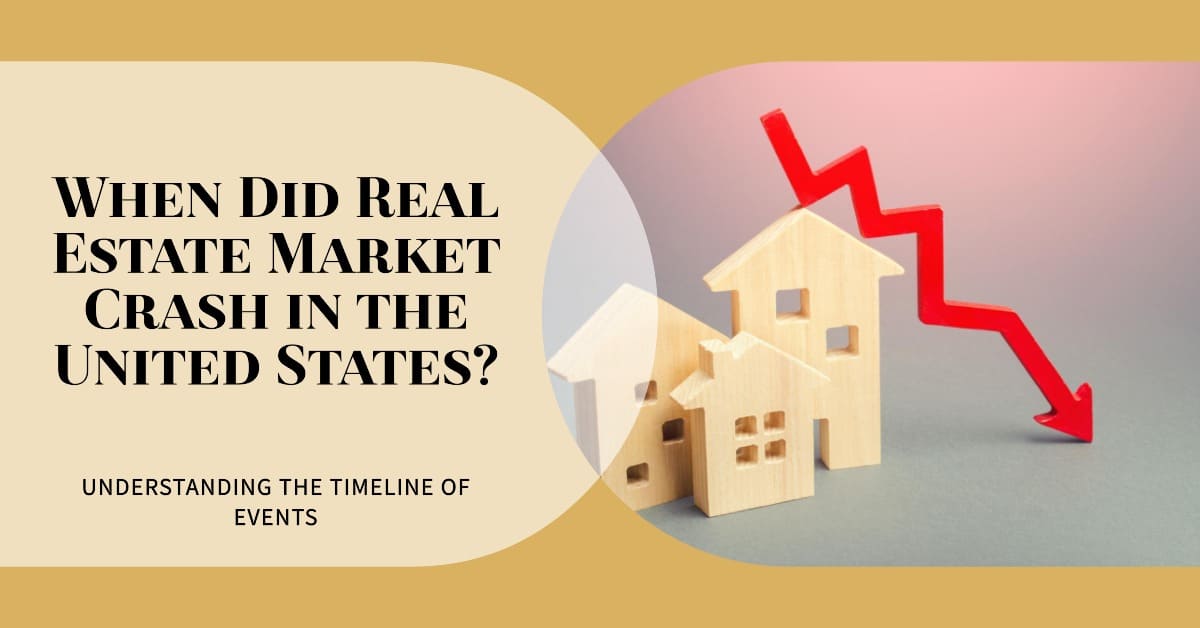If you are wondering when did the real estate market crash in the U.S., the answer is not so simple. The real estate market crash was not a single event, but a series of events that unfolded over several years, starting from 2007 and lasting until 2010. The housing market bubble burst in 2008.
On a fateful day, December 30, 2008, the Case–Shiller home price index documented a historic nosedive in home prices. It marked a shocking turn of events as the median price for a U.S. home that was sold in the fourth quarter of 2008 plummeted to $180,100.
This sharp drop starkly contrasted with the $205,700 median price recorded during the final quarter of the preceding year, 2007. The year 2008 witnessed an unparalleled decline, with home prices experiencing a staggering 9.5% drop.
The real estate market crash was triggered by the subprime mortgage crisis, which was a result of predatory lending practices by banks and other financial institutions. Subprime mortgages are loans given to borrowers who have low credit scores and a higher risk of defaulting on their payments.
These borrowers were lured by low introductory interest rates that would later increase significantly, making their monthly payments unaffordable. Many of these borrowers also took out adjustable-rate mortgages (ARMs), which had variable interest rates that depended on the market conditions.
These subprime mortgages were then packaged and sold to investors as mortgage-backed securities (MBS), which are bonds that are backed by a pool of mortgages. The investors who bought these MBS expected to receive regular payments from the borrowers and also hoped to profit from the rising value of the underlying properties.
However, as the housing bubble burst in 2007, the value of these properties plummeted, and many borrowers began to default on their mortgages. This caused the value of the MBS to collapse, and many investors suffered huge losses.
Effects of the Real Estate Market Crash
The subprime mortgage crisis also affected the financial sector, which had borrowed heavily to invest in MBS and other risky assets. When these assets lost their value, many financial institutions faced insolvency and liquidity problems and were unable to meet their obligations.
This led to a credit crunch, which is a situation where banks and other lenders stop lending money or charge very high-interest rates. The credit crunch affected businesses and consumers alike, who found it harder to get loans or refinance their existing debts.
The real estate market crash also had a severe impact on the economy and society. Millions of Americans lost their homes to foreclosure, and many more lost their jobs as businesses struggled to survive. The unemployment rate rose from 4.6% in 2007 to 10% in 2009, and the poverty rate increased from 12.5% in 2007 to 14.3% in 2009.
Global Repercussions
The real estate market crash also had global repercussions, as it triggered a financial crisis that affected many countries around the world. The US was not the only country that experienced a housing bubble and a subsequent collapse.
Countries like Spain, Ireland, Greece, and China also saw their property prices soar and then crash, leading to similar problems of defaults, losses, and bailouts. The US was also a major exporter of MBS and other financial products that were linked to its housing market.
When these products lost their value, many foreign investors and banks suffered as well. The US dollar also weakened as a result of the crisis, affecting trade and exchange rates globally. The real estate market crash contributed to a sharp decline in economic growth, trade, and investment worldwide, leading to what is known as the Great Recession of 2008-2009.




